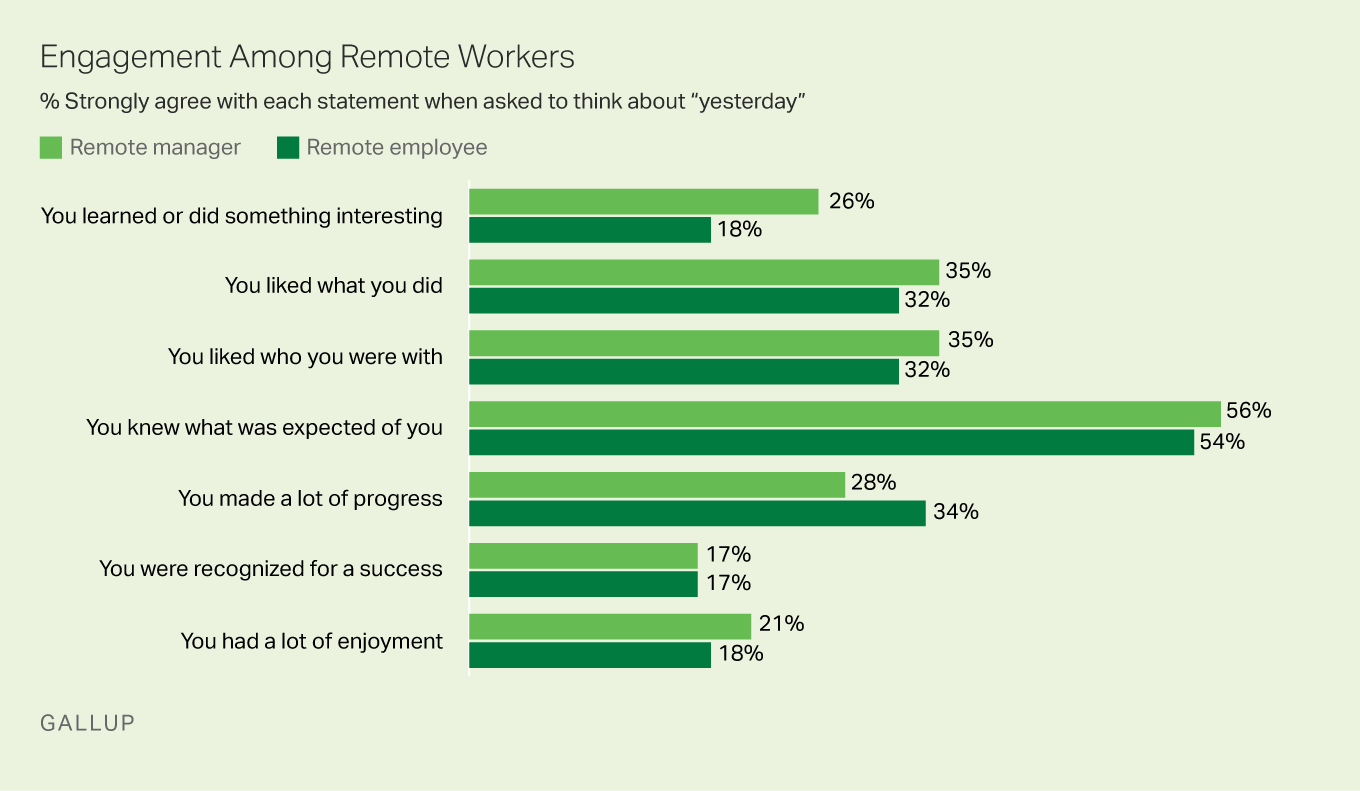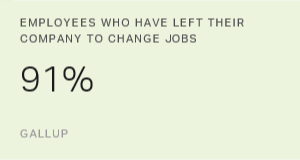Story Highlights
- Engaging remote workers is challenging but critical
- Friendships at work are a key element of employee engagement
- Encourage friendships among remote colleagues by using our proven tactics
Times are changing, and in 2016, 43% of employees in the U.S. worked remotely in some capacity, up from 39% in 2012.
This increase in remote working challenges managers and employees to develop a critical element of performance: engagement.
Shawna is a manager of remote workers. She talks about how her remote workers struggle to stay emotionally connected with the team and that they often feel distant.
What Shawna describes is the essence of the challenge -- workplace isolation, a frequent and unfortunate byproduct of working remotely, and a major threat to engagement.
It is the job of the manager to spot the indicators of workplace isolation and take steps to combat it.
Scholars and management practitioners have been proposing engagement solutions for remote workers for a long time. The prevailing conventional approaches tend to focus on personal or emotional deficiencies, like loneliness or social isolation.
Gallup's approach is different. We recommend that managers deploy a strengths-based approach. Managers should take the time to really understand remote employees. To consider their unique contributions. To watch how they prefer to communicate. To discover how they think about and respond to specific kinds of workplace situations. And, most importantly, to figure out the specific, individualized needs of team members who work remotely. Strengths-based understanding can lead to an effective, people-centric approach.
One of the biggest keys to combatting isolation and increasing engagement is obvious but often overlooked: having close relationships at work. In fact, claiming to have a "best friend at work" is a powerful predictor of workplace engagement, which, in turn, is an antidote to feelings of isolation.
Gallup's Q12 engagement survey asks this very question. Among those who work exclusively in a remote location, a dismal 15% would strongly agree that they have a best friend at work. This is a huge missed opportunity for managers. Why? Because when employees possess a deep sense of comradery with their team members, they are driven to take positive actions that benefit the business -- actions they may not otherwise even consider.
The best employers recognize that people want to build meaningful friendships and further, that company loyalty is built on such relationships.
But the 10th element of engagement is still the most controversial of the 12. More than any other element, "I have a best friend at work," tends to generate questions and skepticism from workers and leadership.
But one stubborn fact about this element of engagement cannot be denied: It predicts performance.
Think back to Shawna and her team: when a remote employee has a best friend at work, they have someone to call, someone to lean on in times of stress -- even when they are working remotely.
But for a moment, let's put the proven performance outcomes that come along with having a best friend at work aside. Gallup recently studied remote workers and remote managers, asking them about their feelings from the day before.
As you look at these numbers, think about the inverse as well.

The data from rows three, six and seven are all factors where a best friend at work could help boost these scores with remote employees.
The best friend question consistently demonstrates a strong relationship to improvements in customer engagement, profit, employee safety incidents and patient safety incidents.
Beyond any talk of business outcomes or scientific validity, though, is a very simple premise: To ignore friendships is to ignore human nature.
Yet, many organizations continue to abide by policies that dissuade or outright discourage people from socializing or becoming friends.
Remote employees and managers have an opportunity to build a work culture that encourages having a best friend at work every day.
And improving scores on the best friend of work question will yield performance results.
Here's how you can start to improve your team's engagement:
- Begin to study your remote workers' patterns. When are they meeting via video conference or able to connect with peers to collaborate together?
- Look for opportunities to get remote employees together for events, even if this means using technology.
- Understand your remote workers' strengths and their natural talents to appreciate who they are and how they work best.
- Spend time understanding what type of friendships your employees are looking to make. With their talents in mind, this gives you the clues and insights to match up complementary partnerships.
- Encourage your remote employees to share stories about themselves.
- Plan time to socialize with your remote employees when it will not disrupt their work or customers.
- Make an effort to hear your remote employees' thoughts and opinions at the end of each milestone on a project or task, as if they were in the office.
- Ask yourself daily, "From what I learned and communicated today -- of those working remotely, who needs to know those things or needs a check-in?"
For most remote teams and organizations, when basic needs are met (such as clarity of expectations, an opportunity to do what they do best, a manager who cares about them and opportunities to develop), friendships can take on a very powerful dynamic in which casual, friendly conversations turn into innovative discussions about how both the team and organization can thrive.
Gallup can help you become a more effective remote manager:
- Download our report, State of the American Workplace.
- Attend our two-day course on leading high-performance teams.
- Watch our on-demand webinar, Managing Your Remote Workers.
- Lead your team to greater success by understanding their natural strengths.



